Amanda Geroy-Profile
Guru Brahma Guru Vishnu Guru Deva Maheshwara Guru Sakshat Parambrahma Tasmai Sri Gurave Namaha
Amanda is a devotee whose love for God finds expression in Odissi dance. While dancing, she comes before God with an offering of her body, mind, and heart.
Amanda has been a life-long artist. Excelling since childhood at visual arts, drama and dance, Amanda began her performing career at the age of six. She was involved in theater for many years and received a bachelor’s degree in theater from Northwestern University in Chicago where she also majored in Russian language and literature. She has performed throughout the U.S. in cities such as Nashville, Detroit, Chicago, San Francisco, Santa Fe and Off-Broadway in New York. She has received scholarships and honors for her excellence in theater and academics and was given the opportunity to study in Russia for eight months.
When she came to San Francisco, California in 1999, Amanda met her first Odissi guru, Guru Jyoti Rout. In Odissi Amanda found a perfect blend of devotion and artistry and she began immediately to devote herself whole-heartedly to studying the art form. In 2000 Amanda spent six months intensively studying in India under the direction of Guru Jyoti Rout and Guru Padma Charan Dehury. During that time Amanda also studied Odissi mardala drum and Oriya language and immersed herself in Oriya culture. Amanda followed up with a second trip to India in 2001 for two months. Amanda finally shifted to India on a long-term basis in December of 2006. Since that time she has been living in Orissa and training under the guidance of Srimati Sujata Mohapatra at Srjan, Bhubaneswar. She also currently studies mardala under eminent guru Banamali Maharana.
Amanda feels quite fortunate to have studied under two Odissi gurus who hail from different gharanas and who specialize in different aspects of the dance form. Guru Jyoti Rout is a master of abhinaya and a prolific choreographer. During the seven years under her tutelage, Amanda learned the subtle art of expression and gained her regard for dance as an act of devotional worship. In Srimati Sujata Mohapatra, Amanda finds the embodiment of dedication to the art form of Odissi, expressed in an unparalleled perfection of technique and a total union of life and art. Smt. Mohapatra's rigorous training standard and strict adherence to the perfection of her Guru’s style have enabled Amanda to open up to the very essence of Odissi with all of its nuances.
In America Amanda has had a prolific Odissi performing career. Productions with Jyoti Kala Mandir Performing Company include Sri Jagannath-2000, Buddha-2002, Konark-2003, Cosmic Dance-2004, Amrit Dhara-2005, and Avatar-2006. She had her solo debut or Ranga Puja performance in San Francisco in 2004 and other major solo performances in Phoenix, Atlanta, Santa Fe, Taos, San Jose and at the San Francisco Ethnic Dance Festival in 2005 and 2006. In addition to being a dancer, Amanda has written and narrated English scripts for numerous Odissi performances and was a teacher of Odissi and drama to children and adults.
Amanda made her India performing debut in 2006 at the 3rd International Odissi Festival in Bhubaneswar where she received critical acclaim for her portrayal of the character Hanuman. She continues to perform at festivals of classical dance throughout India.
Amanda firmly believes that in order to portray the subtleties of abhinaya in Odissi with authenticity and spontaneity it is necessary to spend enough time in the Oriya culture to understand the Oriya mind, heart, way of living, and most essentially the Oriya belief system, which is epitomized in the worship of Lord Jagannath. To this end, she continues to be based in Orissa where she can practice speaking Oriya and continue her sadhana in the company of the many wonderful Odissi dancers and musicians who make Orissa their home.
In her home country of America, Amanda has always aspired to touch the hearts of people from all walks of life, backgrounds and languages with the beauty and spiritual depth of Odissi. She truly believes that at the core all humans are one and that God is one. When an artist is able to touch that universal God through his or her art, all spectators become spellbound, all are uplifted and all find their own link to the great Oneness which is beyond the boundaries of name and form. It is Amanda’s heartfelt wish that all beings connect in whatever way to that One which is the source of peace and universal love.
Amanda Geroy,
Odissi Dancer ● Theater Artist
E-mail: amanda.geroy@gmail.com
“[At the 3rd International Odissi Festival in Bhubaneshwar] Of the dancers based abroad, Jyoti Rout’s disciple Amanda Geroy’s physical agility and bhava in Sankatvimochan Hanuman impressed.”
Leela Venkataraman
The Hindu, January 5, 2007
"At the 3rd annual Devdasi national dance festival hosted recently at Rabindra Mandap in Bhubaneswar, the amazing and intense abhinaya of American dancer Amanda Geroy (disciple of Sujata Mohapatra) left the audience spellbound."
The Hindu, October 24, 2008
“As the dancer got onto the stage and depicted the devotional character of Hanuman, at the 3rd International Odissi Festival in Bhubaneshwar, the huge audience refused to believe that the performer was a foreigner. Such was her intensity, involvement and perfection in portrayal of the character. And that was the distinct debut for Amanda Geroy, the American theatre actress turned Odissi dancer who is now based in Bhubaneswar.”
The Hindu, June 13, 2008
“It was an exciting experience for the audience to witness ‘Shiva Tandav’ - a duet dance recital by Amanda from the US and Maria from Peru both of whom are being trained at the city-based Guru Kelucharan Mohapatra’s Srjan dance institution. Incredible was Amanda’s exhibition of command over an oriental dance form and understanding of a mythological character like Lord Shiva.”
New Indian Express, May 16, 2008
“Amanda Geory from USA groomed at Srjan, showed complete dedication to the dance form through her performance. It is amazing to see a dancer of non-Indian origin, practicing Indian forms with complete austerity.”
Narthaki, January 28, 2008
“Amanda Geroy from California’s portrayal of the character of Hanuman left the audience spellbound.”
The Hindu, December 31, 2006
Major Odissi Performances
Solo
Apr, 2011 Unbound Beats, Ranjana Gauhar's Fest, New Delhi
Jan, 2011 Pragyoti Festival, Guwahati, Assam
Dec, 2010 National Odissi Festival, Bbsr, Orissa
Dec, 2010 1st Odissi Intl. Festival, Bbsr, Orissa
June, 2010, Guru Dakshina Utsav, Bbsr, Orissa
Sept, 2009 Int'l Theater Olympiad, KVK, Cuttack, Orissa
July, 2009 Raseswar Saikhia Award, Guwahati, Assam
June, 2009 Ekamra Utsav, Bbsr, Orissa
Feb, 2009 Neem Karoli Baba Ashram, Taos, USA
Nov, 2008 Shinjan Nrityalaya Festival, Kolkata
Sept, 2008 3rd National Devadasi Festival, Bbsr, Orissa
March, 2008 Neem Karoli Baba Ashram, Vrindavan, UP
March, 2008 Temple Dance Festival, Pushkar, Rajasthan
December, 2007 National Odissi Festival, Bbsr, Orissa
September, 2007 Rani Mandir, Rishikesh, Uttaranchal
June, 2007 Annapurna Theater, Puri, Orissa
December, 2006 3rd Int'l Odissi Festival, Bbsr, Orissa
July, 2006 Hindu Temple, Atlanta, USA
June, 2006 San Francisco Ethnic Dance Festival, USA
May, 2006 Lahar, touring, USA
September, 2005 Festival of India, Phoenix, USA
June, 2005 Lahar, touring, USA
June 2005 San Francisco Ethnic Dance Festival, USA
October, 2004 Mission Cultural Cntr, San Francisco, USA
July, 2001 Anglada’s Auditorium, Taos, USA
July, 2001 The Railyard, Santa Fe, USA
Group
June, 2010, Srjan troupe, KVK, Cuttack, Orissa
Dec, 2009 ICCR Tour with Sujata Mohapatra, USA
Jan, 2009 Sri, Menaka Thakkar Dance Co., Toronto, Canada
March, 2006 Amrit Dhara, touring, USA
April, 2005 Avatar, touring, USA
September, 2004 The Cosmic Dance, touring, USA
April, 2003 Konark, touring, USA
April, 2002 Buddha, touring, USA
November, 2000 Prem, Rabindra Mandap, Bbsr, Orissa
October, 2000 Great America, California, USA
March, 2000 Sri Jagannath, touring, USA
Tuesday, October 28, 2008
Interview With Amanda Geroy
By Shyamhari Chakra, The Times of India, October, 2008
How old is your affair with Odissi?
I took my first Odissi class in the summer of 1999 in San Francisco from Jyoti Rout.
How was the beginning? How did you get to know about this oriental dance form?
I always say that Odissi found me rather than me finding Odissi. For one thing I am a strong believer in fate and I surrender everything into the hands of the Divine planner. But I guess I should back up and say that I knew about Hinduism and Bhakti before I knew about Odissi. Two strains of identity have been flowing through my life since my childhood. The first is my identity as an artist. That began at a very young age. I took to painting and drawing very early, but it was when I first stepped on the stage in a cameo as the smallest member of the cast in a play at the age of six that I knew that I had found my home. I have always passionately loved the theater, the world of make-believe, costumes, props-the whole atmosphere of the theater. My main activity as a child was to invent dramas with my friends using costumes, sets and props made with whatever we found around the house and cajole my mom into watching our lengthy theatrical productions. The second strain came into my life when I became a teenager. At age 11 I took my first step into the Hindu temple which would change my life forever. It was a Hanuman temple, as anyone who has seen my Hanuman rendition won't be surprised to know. We had moved to a new town and my mother brought me to the ashram of Neem Karoli Baba, an Indian saint, which had been built by some of his American devotees. Neem Karoli Baba loved Hanuman very much and in the ashram in America there is a beautiful statue of Hanuman flying across the ocean to deliver Ram's ring to Sita. In the formative years of my adolescence I became more and more interested in spirituality and read books, attended courses and participated in ceremonies from many world spiritual traditions. I spent more and more time at the ashram and in the company of other devotees-making prasad, singing the Hanuman chaleesa and doing other seva. After completing my undergraduate degree in theater from Northwestern University in Chicago I moved to San Francisco with a vague idea of learning Indian dance. I really don't know where the idea came from. I had heard the name "Jyoti". While I was away at college in Chicago, back at the ashram in my home town of Taos, New Mexico a woman by that name had come a couple of times to perform Indian dance. Several of my friends were really impressed with her and I was sorry that I had missed it. That is all I knew, that someone called "Jyoti" who was Indian had performed. So I found myself in San Francisco in the spring of 1999. The very first week I was there I went for a free belly dance class in a local dance studio. There in the lobby was a huge color poster with a captivating-looking dancer smiling out at me. It said, "Jyoti Rout, Odissi Indian Classical Dance Classes" and there was a phone number. "Jyoti," I thought to myself, "Could it be the same one?" Well, it turned out that it was, which is really a fluke since San Francisco and Taos are in completely different states. So I started taking classes with her. I went with her to India for the first time in November, 2000 for an Odissi intensive and I stayed until April of 2001. I came again with her in November and December of 2001 but hadn't been back until I came with her a third time to perform in the 3rd Intl Odissi festival in Dec, 2006.
Why did you wish to learn Odissi?
In Odissi dance I found a synthesis of the two divergent strains of myself as an artist and as a spiritual aspirant. In Odissi I find no separation between the two. And because of my experience as a devotee of Neem Karoli Baba it was very natural for me to express my spirituality in a bhakti practice like Odissi, and to relate to God as manifested in the Hindu pantheon.
Who were your teachers/gurus? And how did they familiarize you with Odissi, its background etc. Did you like it initially?
My first Guru, Jyoti Rout, was excellent at emphasizing that although we were learning it in America, Odissi is intrinsically linked with Oriya culture. At the same time, she was very open and universal in her approach to teaching and choreography and she believed from her heart that anyone could practice Odissi. She always taught that the inner devotion with which the dance was practiced was of paramount importance and that the dancer should merge totally with the dance. She was a very exacting teacher when it came to teaching abhinaya and demanded authenticity and truth in the students' portrayals which made working with her both exciting and challenging from a performing artist's perspective. She also helped me to regard my whole dance practice as not separate from my spiritual practice, which opened up a very fruitful space for spiritual growth.
When did you decide to take Odissi as a profession/mission?
I became serious about Odissi quite quickly once I started learning because the ground was very ready for me to learn it as I already had discipline as a performing artist and as a spiritual aspirant. I had many signs that this was the path for me and I delved right in. By the end of my first trip for six months to India I had realized that Odissi was going to be my life and when I returned to America I devoted everything to it.
When did you come to India and who taught you Odissi?
After seven years of learning Odissi primarily in America I was ready to make a change in my lifestyle and to make space in my life to take the next step of going deeper with the dance. I felt that I wanted to fill out the areas which had been missing in my training, be able to focus more full time on Odissi without having to chase after enough money to survive in over-priced California and to be in the place where Odissi is practiced and taught in its authentic environment, where I could learn the language, something about Odissi music, more about the culture, see more dance, etc. I also had been missing India since I came in 2001. I am very happy traveling and adore being in new places, seeing new things and being outside of my own country. I also love learning languages and studied both Spanish and Russian in college. I decided to leave San Francisco and pursue further Odissi training in India. I left my jobs, packed up all of my things and came to perform at the 3rd Intl Odissi festival. Again I didn't have to search for a Guru in India, but my Guru came to me. In October of 2006 Niharika Mohanty had organized a workshop with Sujata Mohapatra in San Francisco. I had seen Sujata Apa perform in Bhubaneshwar in 2001 and her performance left a strong impression on me. Her grace and impeccable technique were not quick to fade from my mind. I attended her workshop in San Francisco and due to the illness of another participant I ended up having private classes with her much of the time. Needless to say, I was a bit intimidated, but we clicked immediately and I enjoyed the experience immensely. From January of 2007 I began studying under her at Srjan in Bhubaneshwar and it has been incredibly rewarding.
Was it easy to come to India and stay here as a student of Odissi? What were the difficulties?
I had initially intended to stay in India for three months, which became six, which became a year, which will soon be two years! My biggest challenge as a dancer was that I switched styles of Odissi when I started studying at Srjan, which was pretty overwhelming at first. I had to unlearn a lot of habits and really start from scratch. Sometimes I would wonder whether it was worth it when I had a pretty good thing going in America teaching and performing and being the big fish in a small pond to go suddenly to the birthplace of Odissi where the standards are much higher and I was suddenly quite a small fish in a big pond. But it was very much worth it. The rigorous training in technique which I get with Sujata Apa has worn me down and polished me on every level-physically, emotionally, spiritually. The seeds which I planted with Jyoti Apa are now coming to fruition. And slowly I am making my way in the big pond, getting to know the other fish, and really enjoying the challenge of living as an Odissi dancer in Orissa. The big difference about being here is that you can actually have a life as an Odissi dancer and it is a viable career. There are places to perform. There is an audience with a clue about what you are doing. In America it is so marginalized that you have to pull teeth just to get an audience. And the bar is so low that all you have to do is wear your costume and everyone says, "Wow!".
What attracts you to Odissi?
Like I said, I can't say that I consciously chose Odissi over say Bharatnatyam, but when it fell in my lap it clicked. It is definitely beautiful and I like the music. Most of all it is the experience of dancing-in my daily practice, onstage, when I commune with the deity, when my hair stands on end as I dance, when I feel an onrush of energy which carries me along in a pallavi and I feel like I can dance for days...also it is the life-style of being a sevak, being a teacher which I find very rewarding, being a devotee and doing that through art.
How do you plan to move on with it especially when there is less earning or no earning from being an Odissi dancer?
People ask me this a lot-I don't generally plan my life. I feel that whatever is right will come and I feel that right now God wants me to be an Odissi dancer so He will take care of me as I do it. If one day He makes another plan for me I will do that. I am a pretty simple person. If I didn't have to ever touch money that would be just fine with me. If I can do my dance and do some service I am happy. I really love to teach so I hope that I can do that. I feel that it is important to serve the community in some way, especially for us performing artists. In the current artistic culture the thinking can become very self-centered I find. Everyone is vying for programs and thinking about how to promote themselves, which I can empathize with because of course after working so hard to perfect this dance form, you naturally want to show it to someone. But I find time and again that my most rewarding experiences are those in which I am giving something. Trying to maintain that attitude for myself helps me to keep the purity in my practice.
How long do you plan to stay in India?
No idea.
You are seen praying to Hindu gods and temples. Any reason?
God is one.
What is your impression of Oriya women?
I have some close Oriya friends and I love them very much. I think that we all have something to learn from one another. I am happy being who I am and it is a nice reflection for me to see people living with different traditions, different responsibilities, and different attitudes. It keeps me questioning my assumptions, which is healthy.
What is your impression of India?
When I was in California, I was trying to make a living solely as an artist in a society where artists are given very little priority, professional opportunity or respect and where the cost of living is extremely high. I used to spend most of my day in my car, driving from rehearsals for plays I was directing to teaching dance classes to attending my dance classes to working behind the scenes for Jyoti Apa as her assistant and office manager for the dance school. For every hour I was paid to teach and direct I had to put in at least another hour driving through intense city traffic where I would eat most of my meals behind the wheel consisting of some cardboard-tasting nutrition bar or a piece of toast or whatever I could find at a small store on the way (and in America you can't get readily available hot cooked food outside that is nutritious so I lived on dried fruits etc.) and in addition to the driving time I had to prepare for at least another hour or two-choreographing dance numbers, learning music, planning how to direct scenes, or coming up with curriculum for theater and dance classes. From Odissi I used to earn a little every so often from performing and I had a few private students. I worked from early morning until I passed out at night and still I barely made enough to get by. And this isn't just my story, but that is how most artists live in America.
At least in India the whole pace of life is slower. I sold that car so I could come here and I am thrilled with my bicycle. I enjoy riding it through the back alleys of Old Town, observing the village atmosphere-green fields in the monsoon and huge looming clouds, grandmothers in sarees and kids and cows. In America everyone is in his or her own car so you have the feeling that you aren't all sharing one world but that each person is in their own climate controlled bubble with their own personalized soundtrack. Riding my bike here does of course have its own challenges-everyone stares at me, many people make comments, especially adolescent boys who all have to call out "Hi!" or "Hello!" or something not quite as nice, as if they are the first brilliant person to think of saying "Hi" to me. I used to think that maybe there would be a day when finally the word would have reached all ears in Bhubaneshwar that yes, there is a foreigner living amongst us, and she rides around on a bicycle and she is not an alien, but a part of the landscape and we can just take her for granted, like the dogs along the roadside, just leave her to her business. But no, I think that day will never come. I will never ever blend in here no matter how long I stay or how much I might grow to love this place, to feel comfortable with the language, familiar with the landscape, at home with the people. They will never regard me as one of them, I am afraid and will all continue to stare the way children stare in America when they are very young. For us this kind of staring is considered very rude and when we see our kids doing it we teach them to stop. But I have to see the innocence in it and either ignore it or smile, depending on my mood and who is staring.
Your impression of Orissa?
Of course, despite the challenges, there are fundamental things which I have grown to love about being here. This is why I am continuing to stay and stay, to the utter bewilderment of my grandparents. I am here for Odissi, obviously, and I am here because here my life as an Odissi dancer is holistic. I am not bifurcated into many roles and communities the way I was in America. I think life in general here is more holistic. Everybody takes a nap in the middle of the day, for one thing. You would never catch an American over age five or under age sixty doing that. And when it rains, it is an unspoken rule that all bets are off, wherever you are you just stay until the rain stops. We are not so ruled by the clock, by our appointment books, by hard and fast and preconceived plans. Here I can live simply and cheaply and just dance. I don't have to run around and stress out and try to fit in time for my practice. Here each day flows in a natural way. I wake up before the sun and I know that I am not alone, that in the households around me people are awakening, having their baths, doing puja. I sit for meditation on my roof. I do my morning worship as the sun rises. I do my yoga practice. I clean my house (which I don't really regard as mine. I feel like it is an ashram which I have been entrusted with and which I am care taking for the benefit of other seekers like myself who have come on a pilgrimage for dance.) I do my dance practice, I cook and have my lunch, read some books on dance, take my nap, practice again, do my evening worship, eat and sleep, then it starts all over again. Sometimes I realize I haven't even left my house in a day or two. I am totally focused on my practice. That is something which I don't know if I could do in America, or at least which I was not successful at in the past. And of course, above all, my teacher is here and being with her is the biggest blessing in my life. I have entrusted my energies to her and she is molding me as she sees fit. I feel that in her hands I can't go wrong as we are both working together with our minds bent towards the divine.





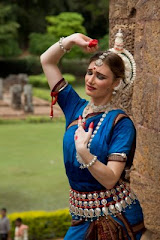

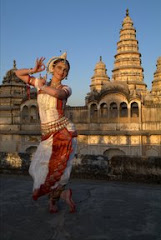

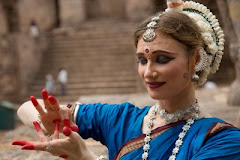

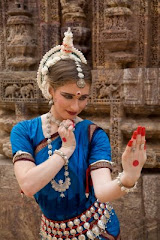

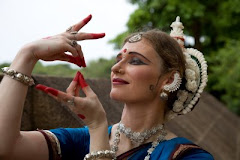
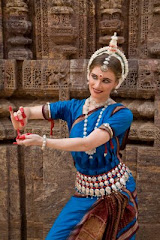
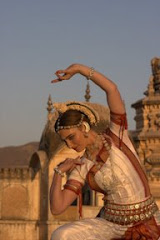
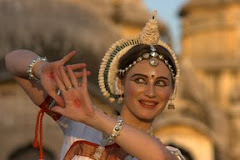
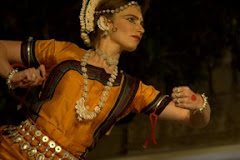

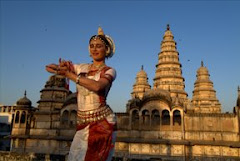
4 comments:
GREAT BLOGGING ABOUT MY STATE AND OUR
CULTURE:GREAT EFFORT
http://kalingaodisha.blogspot.com/2010/03/places_20.html
TAHT IS MU SITE
Helpful artical.
Thanks for a well written and informative post.
Top Most Popular Different Dance Forms of India
Your blog is incredibly informative and the way you present your ideas is truly impressive. The effort you put into creating such valuable content is commendable. Thank you for this post, and please continue sharing more insightful articles like this—it’s genuinely helpful for readers like me!
Bhubaneswar Travels Tour Packages
Your blog is incredibly informative, and I truly appreciate the effort and clarity in your writing. Thank you for sharing such valuable insights—posts like this are extremely helpful for readers like me. Please keep up the great work!
Personalized gifts dubai
Post a Comment